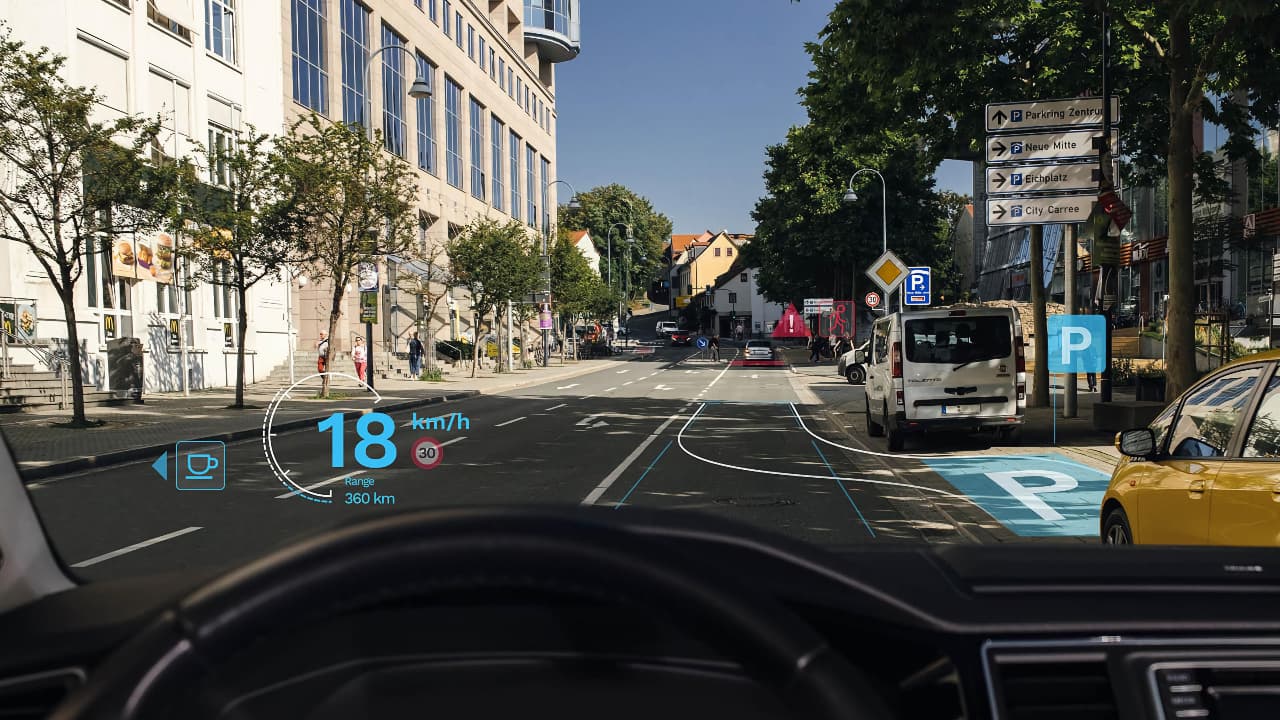
While already deployed for the likes of NASA and ESA for several years, Zeiss’ hologram-generating Multifunctional Smart Glass technology is only now gearing up for mass production. The results could be interesting.
Zeiss’s Multifunctional Smart Glass has been a core and expensive bespoke component of space missions for some years now, the tech having been developed primarily for deployment with the likes of NASA and ESA that can afford it for mission-critical uses. Calling what it results in a hologram is a bit of a cheat - these images don't float free on their own; instead, they’re generated within a thin, transparent layer sandwiched between glass sheets to which ultra-high-precision optics are attached.
Still, the effect is convincing. The image layer is 92% transparent. Zeiss reckons the holographic functionality can turn any glass surface (windows of buildings, transparent screens, side windows of vehicles, etc) into an on-demand communication screen.
To date, this has all been limited to small production runs. However, new replication technology developed in the Zeiss labs means that the fully automated duplication of a master hologram in large quantities is now possible for the first time.
"This technological milestone for holography can be compared to what the invention of letterpress printing meant for writing,” says an enthused Roman Kleindienst, Vice President Zeiss Microoptics. “That's why we call it the 'Gutenberg moment' for holography."
That’s pretty hyperbolic, but then a) CES is a hyperbolic sort of show, and b) there are a *lot* of applications for this. The car windscreen HUD at the top is only the start. It also enables floating switches in vehicle cockpits or smart homes, and the way it can throw light around inside the layer leads to some interesting uses. Interior lighting can pretty much be ‘driven’ from exterior light elsewhere.
Then there’s what it can do for cameras.
“Zeiss Multifunctional Smart Glass technology permits the integration of a transparent camera – a "holocam" – that uses coupling, decoupling, and light guiding elements to divert incident light to a concealed sensor,” a PR adds. “This delivers significant added value for entertainment electronics products such as screens and displays that have integrated cameras. For example, placing the holocam at the center of the screen will allow participants in videoconferences to make eye contact.”
Which, as anyone who’s ever had a Zoom meeting at all would acknowledge, would be nice…
Almost as an added bonus, the micro-optical layer in the window pane absorbs incident sunlight and can transmit it in concentrated form to a solar cell. This combines the advantages of conventional windows – natural light and an unrestricted view – with the additional benefit of efficient energy production. Zeiss isn't saying how much yet, but it’s an intriguing prospect.
Zeiss isn’t planning on producing the components itself either. Instead, it will provide the tech to manufacturers or suppliers who wish to use it. If the results are as good as it says they are, and if they don’t add too much to the price of things for a genuinely mass market debut, the company could be facing some demand for it all too.
Tags: Technology Featured


Comments